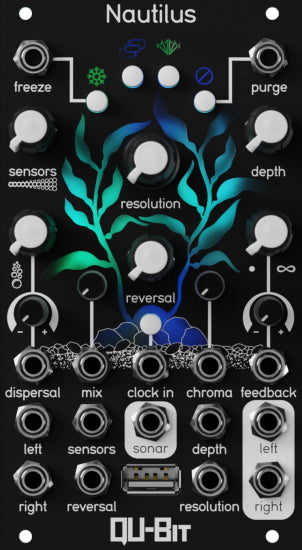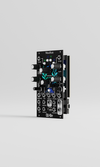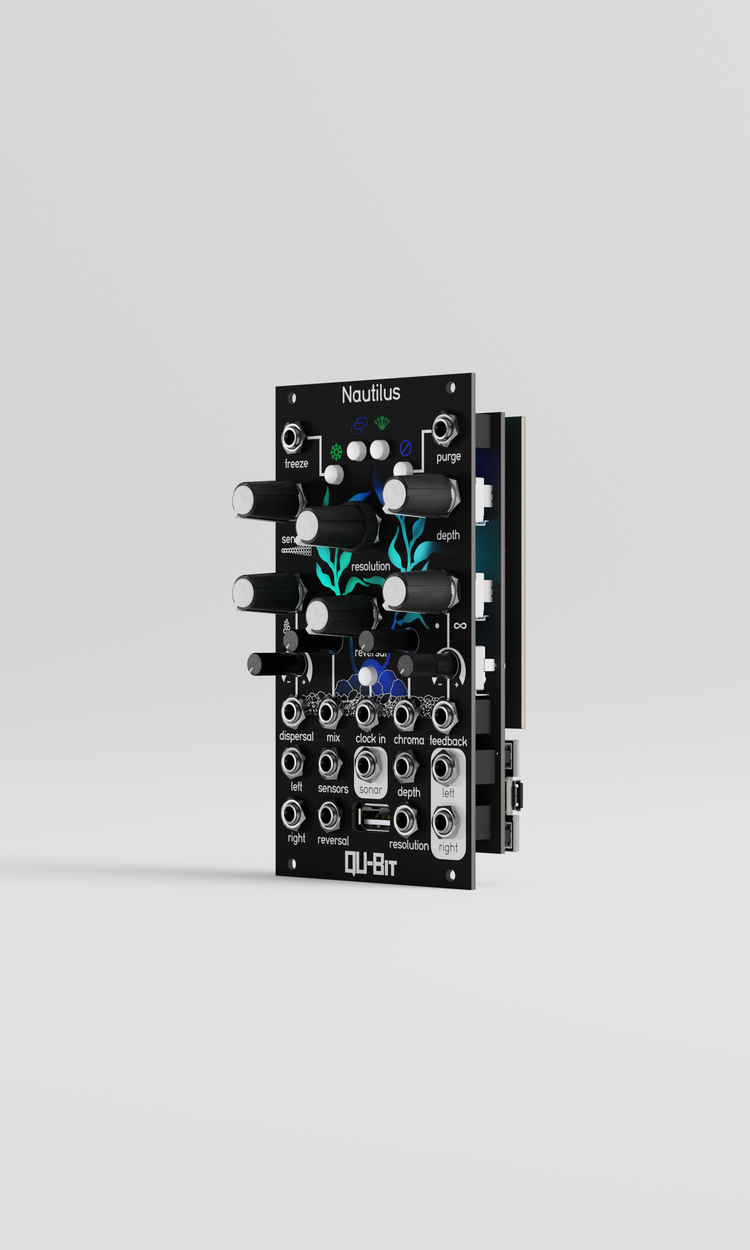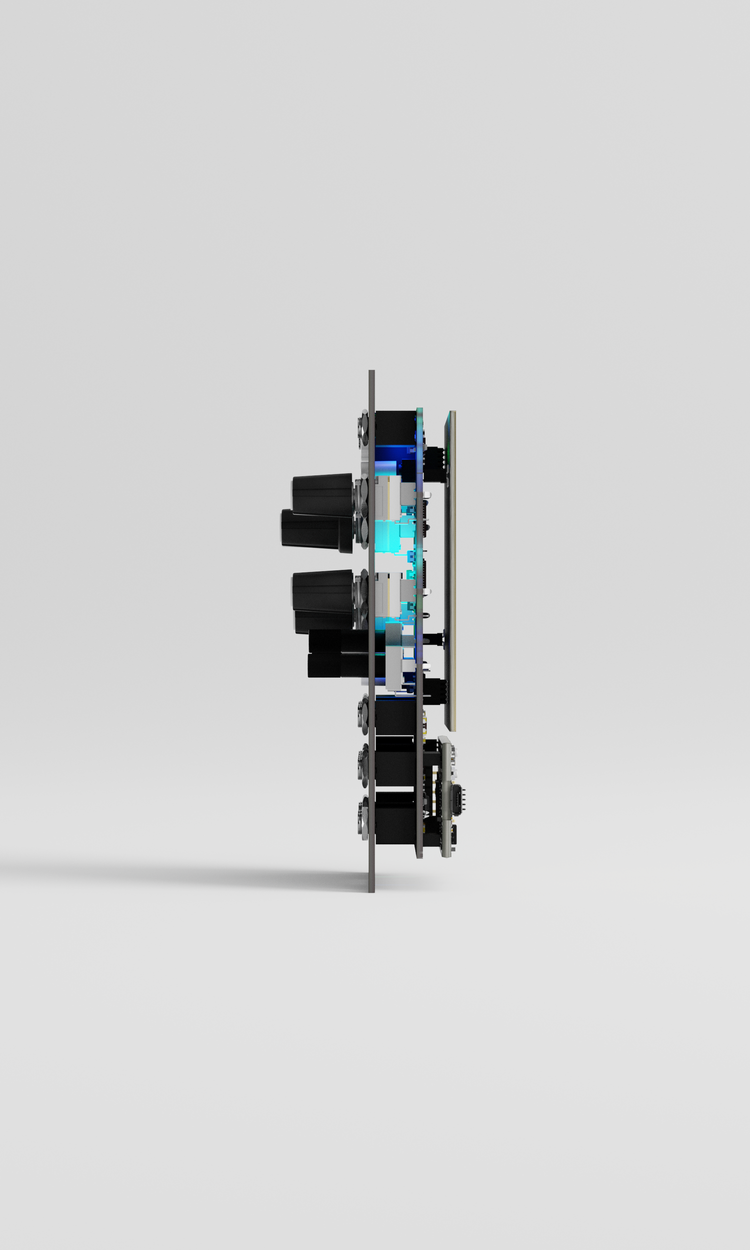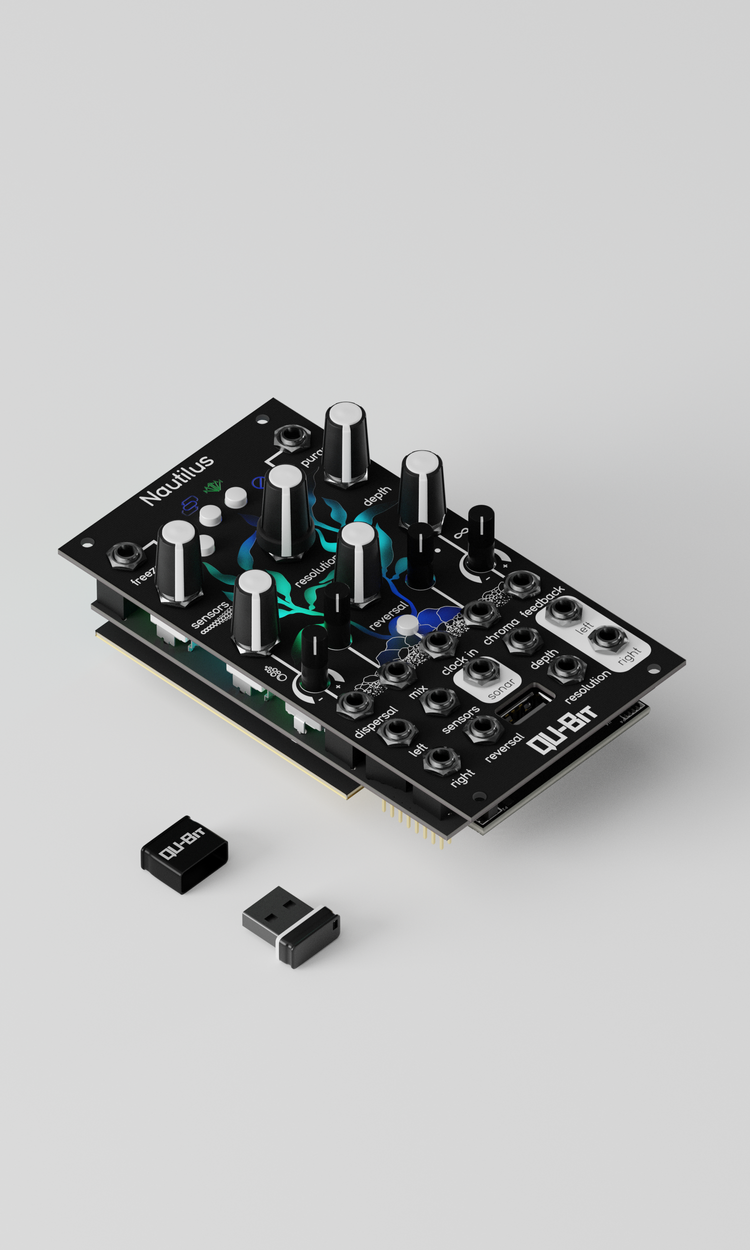
Nautilus is a complex delay network inspired by sub-nautical communications and their interaction with the environment. In essence, Nautilus is a stereo delay consisting of 8 unique delay lines which can be connected and synced in interesting ways. Each time Nautilus pings its sonar system, the generated topography reveals itself through the delay, all while staying in time with the internal or external clock. Complex feedback interactions plunge sounds to new depths, while related delay lines pull fragments of sound in different directions. Manipulate the delay lines even further by configuring the the stereo receptors, sonar frequencies, and aquatic materials that filter the space between Nautilus and its surroundings.
Though Nautilus is a delay effect at heart, it is also a CV/Gate generator. The Sonar Output creates either a unique Gate signal, or a unique CV signal algorithmically generated from Nautilus’s findings. Drive other parts of your patch with pings from the delay network, or use the generated topography as a modulation source.
From the deep ocean trenches, to shimmering tropical reefs, Nautilus is the ultimate exploratory delay network.
-
Stereo Sub-Nautical Delay Processor
-
Ultra low noise floor
-
8 codependent delay lines with up to 20 seconds of audio each
-
Fade, Doppler and Shimmer delay modes
-
Sonar configurable CV/Gate output
A portion of all Nautilus proceeds will go towards the effort to preserve our ocean and coastal environments through the Surfrider Foundation.
Download the Quickstart Guide.
Configure Nautilus Settings With Narwhal
Tech Specs
Width: 14HP
Depth: 22mm
Power Consumption: +12V=151mA, -12V=15mA, +5V=0mA
GEAR NEWS:
Nautilus
Qu-Bit always likes to make things deep and complicated if they can. In Nautilus, they have a module that pings its sonar system to reveal a generated topography of complex feedback interactions. Ok, but it’s a delay, right? It’s a stereo delay module? Yes, it is, but look at how beautiful it is, how intriguing and mysterious with lots of interesting named ports and knobs. Let’s get on our wellies and wade into the wash.
So, as I understand it, Nautilus can act as a stereo digital delay. It has 8 codependent delay lines that can hold up to 20 seconds of audio each. They all pull fragments of sound in different directions. You can set up stereo receptors, sonar frequencies and aquatic materials that filter the space between Nautilus and its surroundings. No, I don’t know what that means either, but heck, full steam ahead Captain Nemo.
Looking at the front panel, which is beautiful, we can see the stereo input and output, feedback and clock connections that will be familiar with any other stereo delay. But then things get interesting with Resolution and Reversal knobs in the middle. There’s something about Sensors, Dispersal and Depth which all fall into the nautical theme. There’s a Freeze button, a Chroma knob and a Mix output that’s not audio but generated CV. How it all works together is difficult to know at this point, but I am certainly intrigued.

